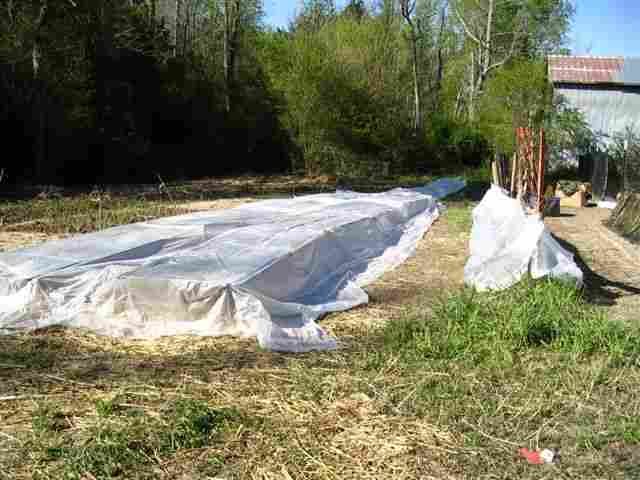
*Handling a Cold Snap*
This article is one in a series of articles intended to share experiences in Getting Food From Your Garden To Your Table. With increasing fuel prices and uncertain economy it makes good sense to have a garden. Food prices have and will continue to rise. Increased fuel cost means more expense to you than just the trip to the grocery store. The cost of transporting produce for hundreds of miles, fertilizer, and packaging costs will ultimately have to be passed along to the consumer. Having a well planned home garden can save you money if you are frugal. It can also cost you more if you are not frugal. Having a productive home garden requires skills that must be developed over several years just as the garden will become more productive as the soil improves year to year with the proper plan. Don't expect to be able to throw a few seeds out or plant a few plants and eat. It takes time to develop a productive garden and learn the skills required. What works in one area might not work in another. It will not be free but there are other advantages worth mentioning such as knowing the safety of your food supply, having the skills, and knowing what you are capable of doing before you are dependent on having to do it. Take it slow. Expand your garden as your skills grow. The important thing is to start NOW to build a productive garden plot and develop the skills you need. This article will focus on handling a cold snap in the early spring garden.
In order to extend the number of growing days in the season for some areas it is necessary and tempting to "push" the season a bit by planting things before the last frost date. Some plants will tolerate a light frost better than others but there are things that I have done to provide some limited protection to tender plants from a light frost.
If your garden is small and you only have a few plants it may be possible to use large Styrofoam cups inverted over the individual plants. While this works well and is practical for a few tender plants, covering several hundred plants in a moderate to large home garden is impractical.
Something that I have found to work reasonably well in this situation is some kind of low supports, in my case I found some wire baskets destined for the dumpster at a local retail store that they were kind enough to give me. These wire baskets when inverted over the small plants were strong enough to support old tin laid across them and a lightweight covering of thin plastic sheeting. This provided an airspace not touching the plants that remained above freezing even though we had a hard freeze and saved several hundred plants I had planted early. Remember it doesn't have to be pretty. Scrounging materials and using whatever you have on hand that works is preferable to spending hard earned money on expensive solutions like row covers. Clothespins can be used to attach a lightweight covering to the trellis over the plants. Be creative and remember to remove the covering in the morning before the sun causes the covered space to heat up into an oven which will also damage the transplants. Monitor the weather and if a possibility of a freeze happens it is worth the effort to save your hard work.

www.alpharubicon.com
All materials at this site not otherwise credited are Copyright © 1996 - 2009 Trip Williams. All rights reserved. May be reproduced for personal use only. Use of any material contained herein is subject to stated terms or written permission.